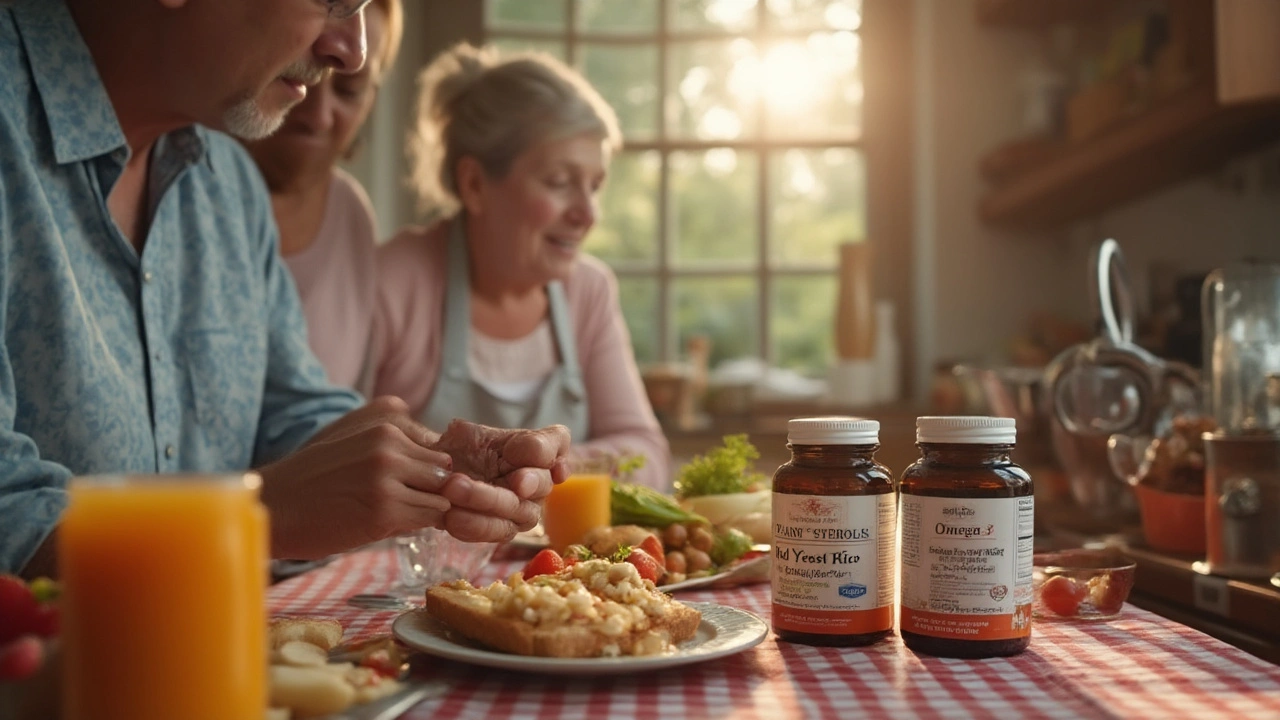Plant Sterols – What They Are and Why You Might Want Them
If you’ve ever heard that “plant sterols can help lower cholesterol,” you’re not alone. These tiny compounds look a lot like the cholesterol your body makes, but because they come from plants, they act more like blockers than builders. When you eat them, they compete with dietary cholesterol for absorption in your gut, which means less cholesterol ends up in your bloodstream.
That simple trick can translate into noticeable drops in LDL (the “bad”) cholesterol for many people. Lower LDL means lower risk of heart disease, and that’s why doctors often suggest plant sterols as a natural add‑on to a balanced diet.
Top Food Sources of Plant Sterols
Getting plant sterols from food is easy if you know where to look. Here are the most common sources:
- Fortified margarines and spreads – many brands add 0.5–1 g of sterols per serving.
- Orange juice – some manufacturers fortify their juice, giving you a tasty dose without extra fat.
- Nuts and seeds – almonds, sunflower seeds, and pistachios contain modest amounts naturally.
- Whole grains – wheat bran, oats, and rye have small but steady levels of sterols.
- Legumes – beans and lentils add a bit more to the mix.
The key is consistency. A daily intake of about 2 g of plant sterols is what studies point to for a 5–15% drop in LDL. You can hit that number by spreading fortified margarine on toast, sipping a glass of enriched juice, or adding a handful of nuts to your snack.
Choosing a Plant Sterol Supplement
If you don’t want to chase fortified foods all day, a supplement works just as well. Look for these features:
- Standardized dose – products should list the exact amount of sterols per serving (usually 0.5–1 g).
- Pure ingredients – avoid blends that hide fillers or artificial flavors.
- Third‑party testing – a seal from USP, NSF, or a similar group means the label is trustworthy.
Take the supplement with a meal that contains some fat. Plant sterols are fat‑soluble, so a bit of oil helps them do their job. Most people find taking one capsule with breakfast and another with dinner works fine.
Are there any downsides? For most folks plant sterols are safe, but they can slightly reduce the absorption of fat‑soluble vitamins like A, D, E, and K. If you’re on a low‑fat diet or have a condition that already limits vitamin intake, consider a multivitamin or talk to your doctor.
People with sitosterolemia – a rare genetic disorder that causes plant sterols to build up in the body – should avoid them completely. That’s the only group where sterols are truly contraindicated.
Bottom line: Plant sterols are an easy, low‑cost way to give your cholesterol numbers a boost without prescription meds. Pair them with a heart‑healthy diet (lots of veggies, lean protein, and fiber) and you’ll have a solid plan for supporting cardiovascular health.
Can supplements like red yeast rice, plant sterols, or omega-3s really lower cholesterol? Learn what works, what doesn’t, and get genuinely useful tips.
Jul, 16 2025

